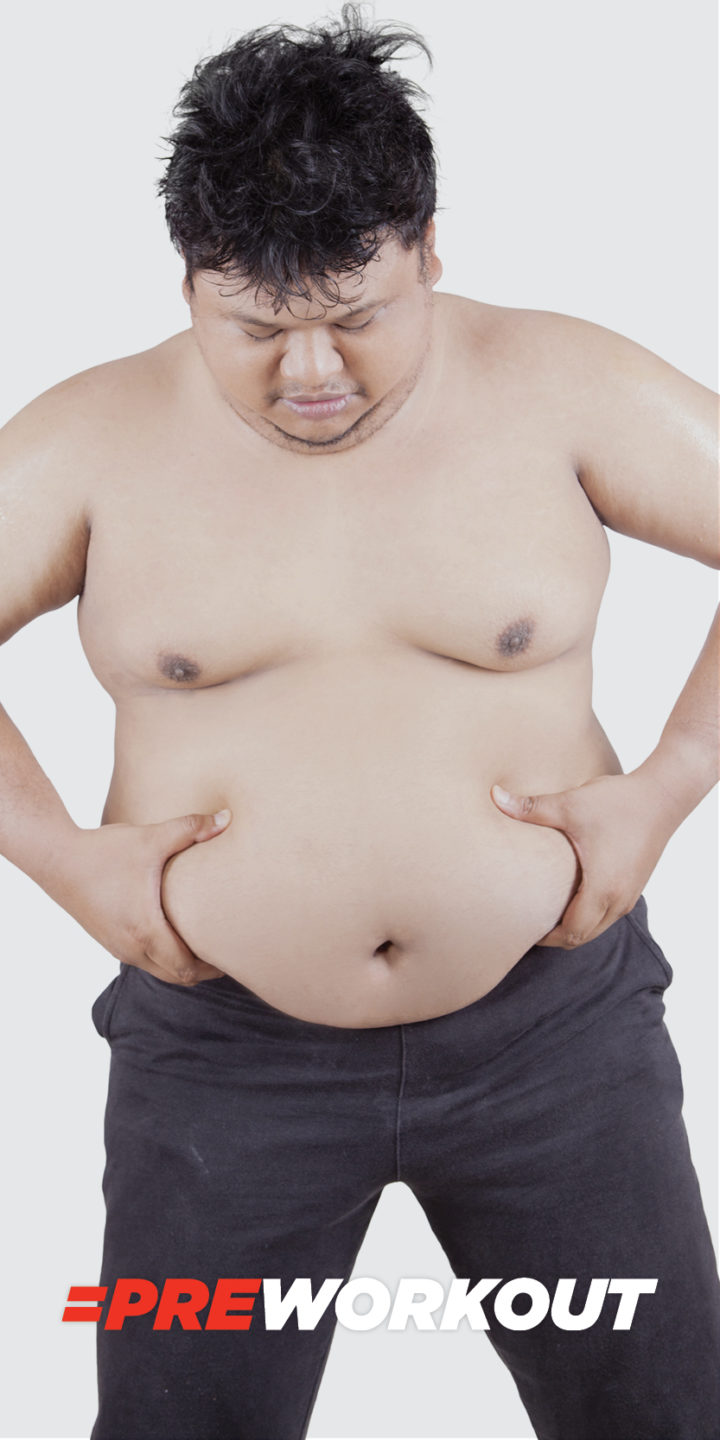People aim to lose weight for myriad reasons and there are real benefits, particularly if you are overweight or obese. For others, the enjoyment comes purely from what they see in the mirror after some fat loss. Getting a better view of those muscles you’ve worked hard to build is something to celebrate.
What are the benefits of Weight Loss?
- a longer life with improved quality
- decreased risk for cancer
- decreased risk of type II diabetes
- decreased risk for Cardiovascular disease
If you’ve thought about losing weight, but are overwhelmed by the surplus of information available, we’re here to help.
In this article, we will explain what fat loss actually is, debunk fat loss myths, and demystify some of the complexities.
Key Points:
- There’s no secret or quick fix. To lose weight you must be in a calorie deficit.
- Weight loss should be done at a slower pace, 0.5-2lbs per week.
- As far as macros go, prioritize getting enough lean protein each meal.
- Walk more. Aim for 7,500 steps per day.
- You can’t choose to reduce fat in a specific spot, like your belly or arms. Genetics determines both where we carry and lose fat.
- As we age, other factors like age-related muscle loss and hormonal changes make weight loss more difficult but not impossible. Changing what you eat can help you burn fat. And some Thermogenic supplement ingredients for burning fat can help you achieve your weight loss goals.
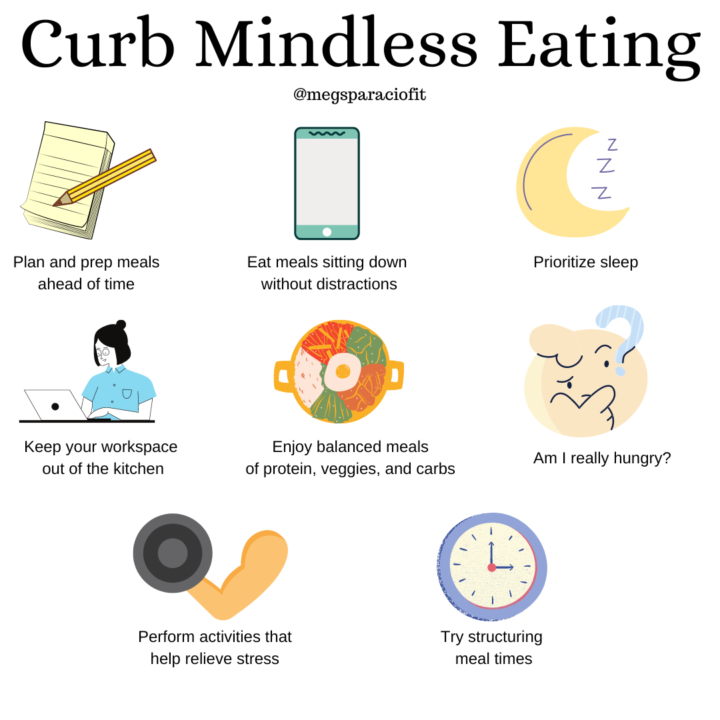
Let’s start things off with the basics of how to get started with your weight loss.
The Basics of Losing Weight In A Healthy Way
Weight loss can be difficult and many people think there’s a secret diet, workout program, or supplement that’s a quick fix and that’s just not true.
If there is one truth about weight loss that you learn from this article, let it be this: to lose weight you must be in a calorie deficit.
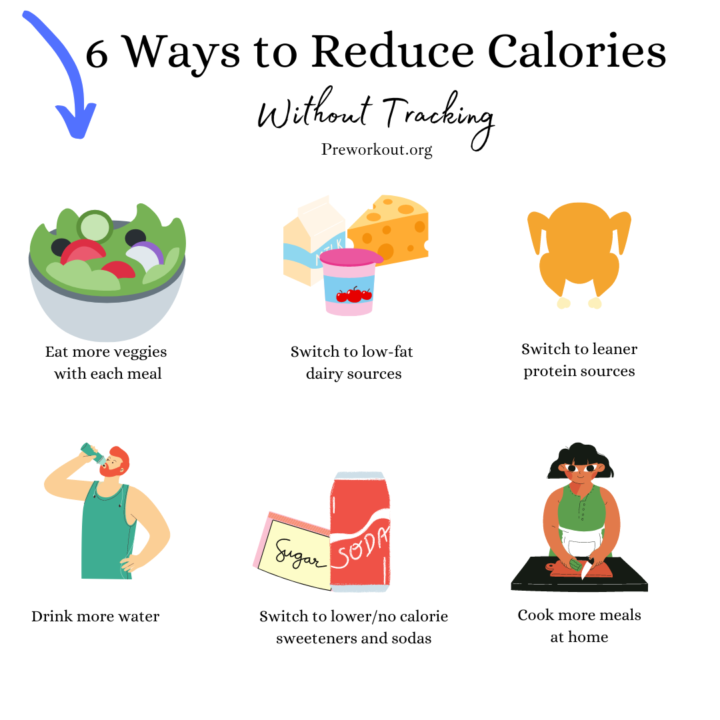
Calories are the amount of energy released when your body breaks down (digests and absorbs) food. Your energy balance is the balance of calories consumed through eating and drinking compared to calories burned through physical activity.
What you eat and drink is ENERGY IN. What you burn through physical activity is ENERGY OUT. Our energy balance is what regulates weight and fat loss. To lose weight, the ENERGY OUT must exceed the ENERGY in. This creates a calorie deficit.
If we are not losing weight, then we are not in a caloric deficit.
Below we’ve listed the six most important areas of focus to begin your weight loss journey. Some minor number crunching is involved.
1. Identify your set daily calories
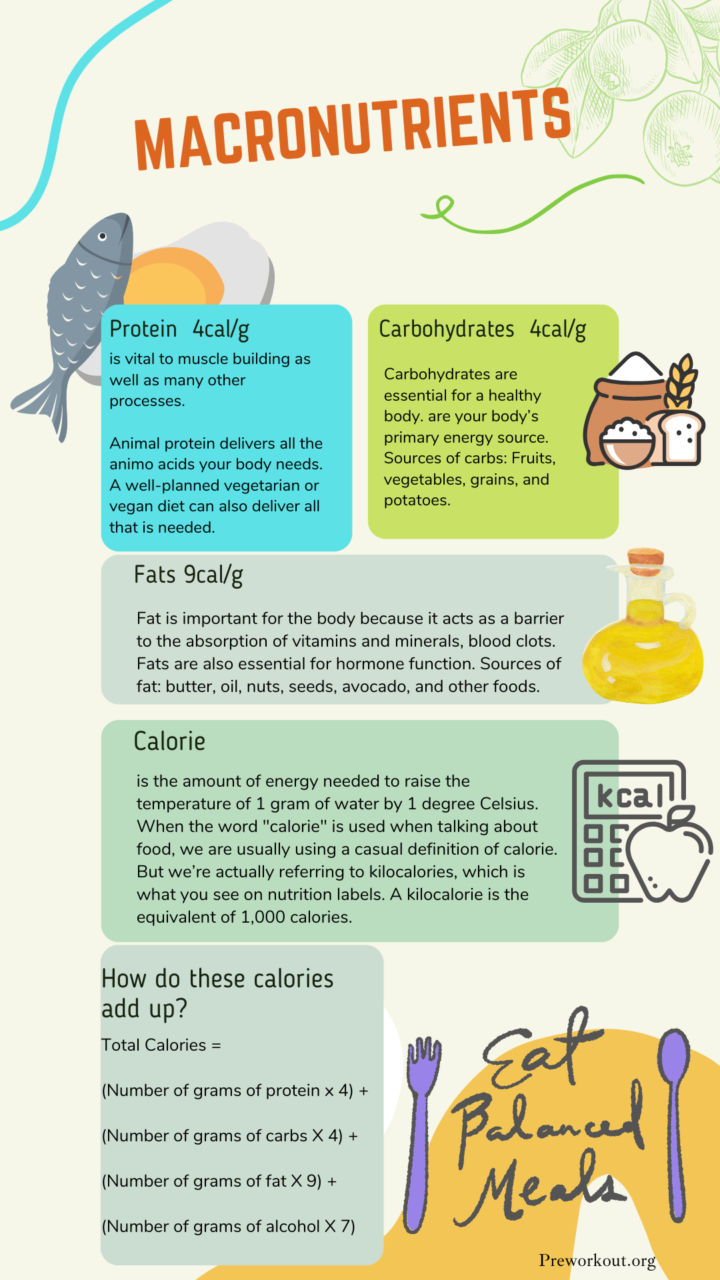
Here’s the formula: goal weight in pounds X 12 = daily calories
Example: if your goal weight is 140, then your total daily calories would be:
140 X 12= 1,680
2. Find out your daily protein intake
Here’s the formula: goal weight in pounds X 0.7
Example: if your goal weight is 140, then your minimum (yes, you can eat more!) daily protein intake would be
140 X 0.7 = 98g
3. Determine your daily fiber intake
For men and women ages 50 and younger, the recommended daily allowance for fiber is 38g and 25g respectively. Most Americans only get about 16g per day!
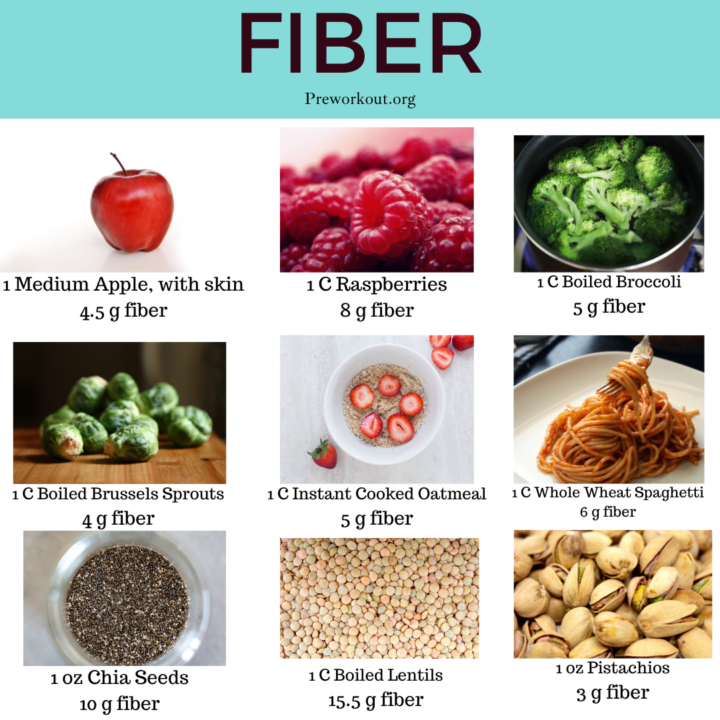
4. Set a goal for steps/day
7,500 steps
*NOTE: You might have heard the ideal number of steps per day is 10,000. The “10,000 steps per day” blanket recommendation began as a marketing campaign years ago.
Since then, studies have shown a decreased risk in mortality for adults 60+ years of age when walking between 6-8k steps per day and for adults >60 years walking between 8-10k steps. [1]
Beyond these numbers of steps, the rewards diminish.[1] So, 10k steps does not need to be the goal for everyone. But if you can and you enjoy walking 10+k steps each day, keep it up!
If 7,500 steps per day is not achievable for you at this point, don’t stress. You aren’t alone! Not everyone has the time or access to be able to get in this much walking. Try to build up from where you are. If you’re getting around 3k steps right now, even building up to 5k is fantastic.
5. Identify a strength training schedule that works for you
There are lots of effective ways to strength train depending on your schedule. You can make progress with fat loss withe 2, 3, or 4 times a week. If 2-3 days works best for you, do one of these three full-body workouts.
Full-Body Workout at Home
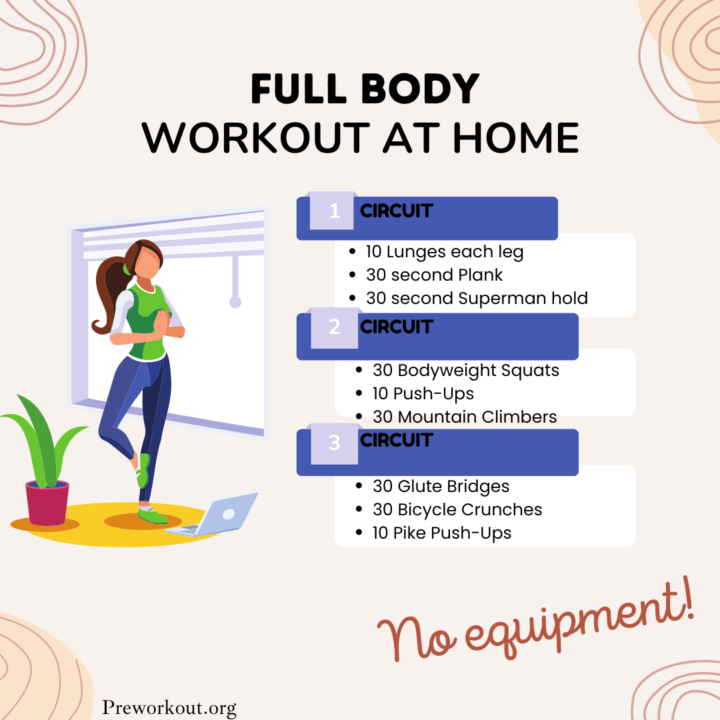
If you can consistently train 4-5 days a week, try this split:
Day 1: Lower body
Day 2: Upper body
Day 3: Rest
Day 4: Lower Body
Day 5: Upper Body
Days 6-7 Rest
Dumbbell Workout
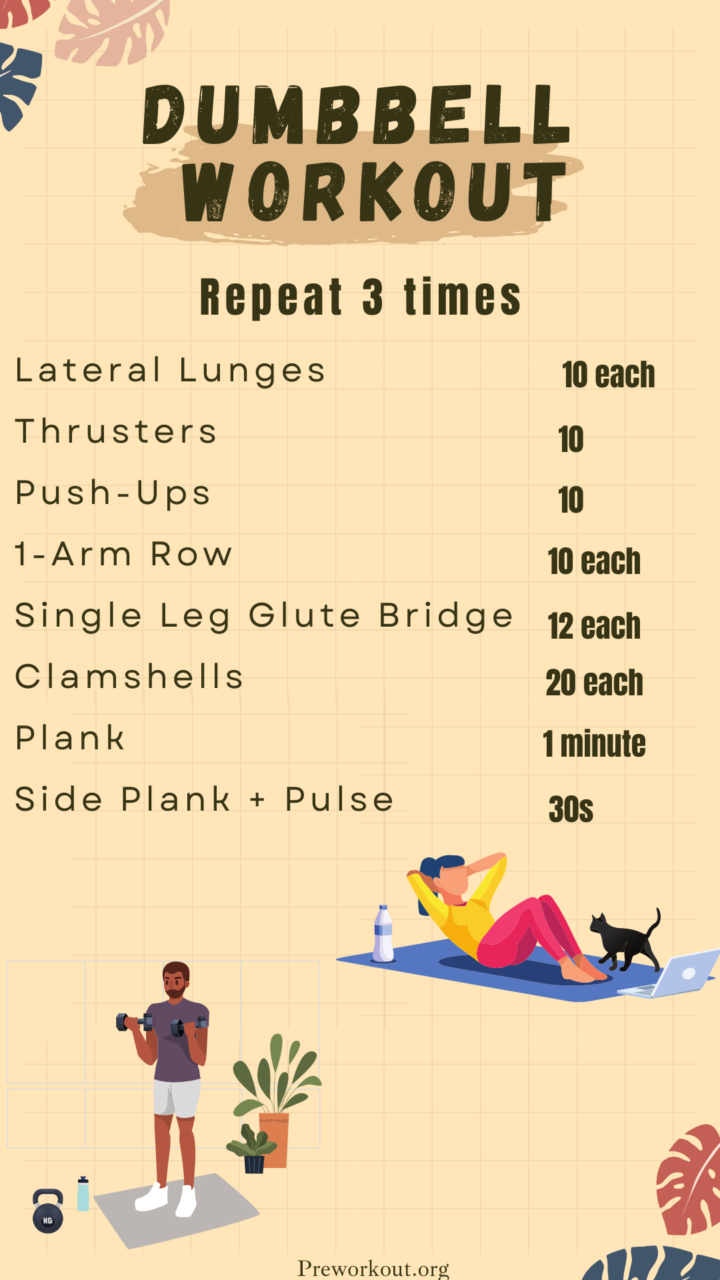
Tabata workout
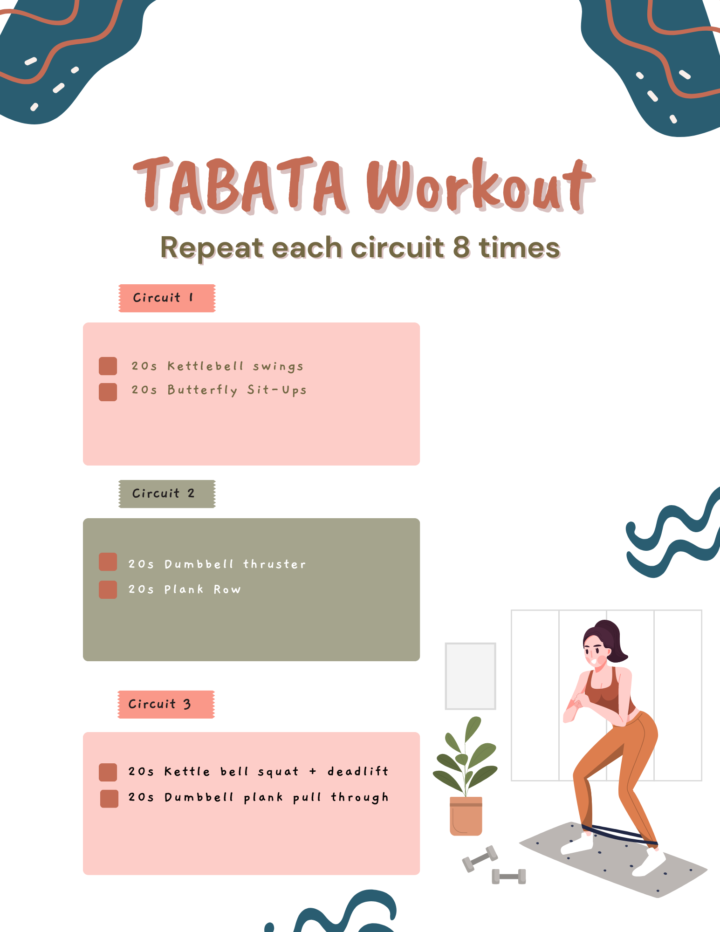
6. Other Weight Loss variables to consider
Stress
Stress raises the body’s metabolic needs and creates a chain reaction of behaviors that can negatively affect eating habits. People who experience chronic stress may crave comfort foods, particularly foods high in sugar, fat, and calories, which may then lead to weight gain which are high in calories but low in nutrients.[2] Stress will also interrupt sleep. Chronic stress elevates levels of cortisol which leads to the accumulation of fat in the belly area.
Hydration
Sometimes we mistake dehydration for hunger.[3] The next time you are about to grab a snack try drinking water. You might find that water is what you actually needed.
Sleep
Disrupted sleep, both quantity and quality, have been shown to lead to an increase in eating, mainly from snacking, especially on foods high in fat and carbohydrates.[4] This will most assuredly negatively impact any weight loss goals.
Why Spot Fat Loss Doesn’t Work
The concept behind spot reduction is that a certain area of the body can be targeted for fat loss through site-specific exercises. For example, performing abdominal muscle exercises in an effort to lose belly fat.
There is not enough evidence to support the claim that spot reduction is effective. While targeting specific body parts during exercise can be effective in building muscle and creating shape in those areas, it won’t necessarily help you lose fat in that specific area.[5]
While we can’t choose specifically where fat is reduced in our bodies, we have a better chance of reducing fat throughout the body when overall fitness levels are increased. Addressing our overall diet and physical activity level is the most effective approach for fat loss.
How Do You Burn Fat Without Losing Muscle
1. Maintain Only a Moderate Caloric Deficit
Reducing your calories by too much too quickly can cause muscle loss. Not only will you be depleting your body of enough nutrients to heal and recover, but you’ll also risk serious health problems.
Start with a moderate deficit of only 500 calories. This number is a great starting point for fat loss without sacrificing both muscle building and strength progress.
2. Prioritize Eating Enough Lean Protein
If you want to preserve your hard-earned muscle mass during a fat loss phase, it is absolutely vital that you consume enough lean protein.
In a review by Brad Shoenfield and Alan Aragon, they conclude that a daily protein intake of 0.7-1 gram of protein per pound of your goal weight is sufficient for fat loss.[6]
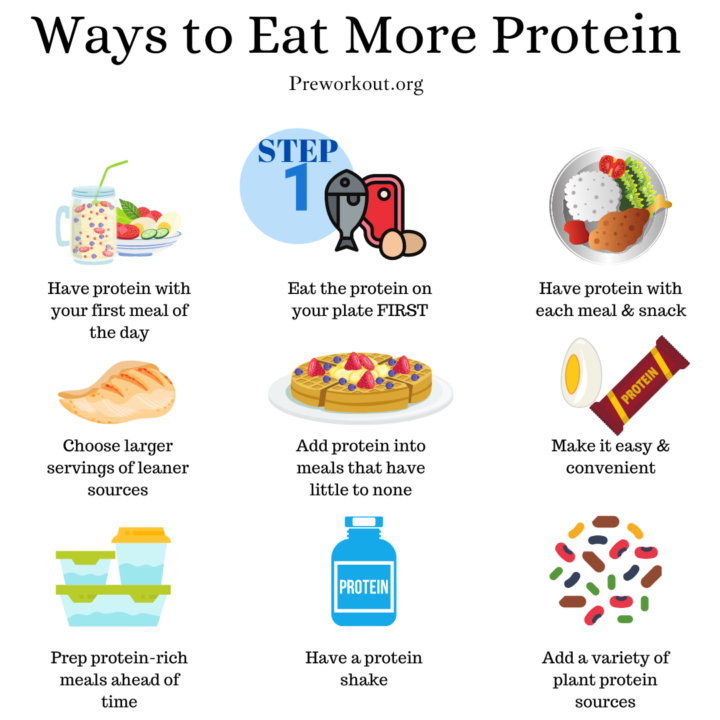
A higher protein diet can help accomplish this for a couple of reasons:
- In addition to resistance training, eating a higher protein diet will help increase muscle mass, which in turn will increase your basal metabolic rate. The higher your basal metabolic rate, the more calories you will burn over the course of 24 hours because muscle burns more calories than fat.
- Protein has a higher thermic effect than other macronutrients and the process of digesting protein requires more energy.
- Protein helps us feel full moreso than carbohydrates and fats for fewer calories. So, if your diet is high-protein you will consume fewer overall calories while feeling fuller and chances are you won’t be thinking about food all day. Fat loss can be psychologically challenging.
3. Get Enough Sleep
Recovery is just as important as your training, especially during a fat loss phase. Your body is undergoing stress both inside and outside of the gym when restricting calories.
While your body secretes growth hormone throughout the day, it peaks at night while you sleep and it’s also highest when your sleep is deepest. Skimping on sleep, however, will only short-change your muscle growth and repair.[7]
4. Focus on Lower Intensity Cardio
Choose lower-intensity methods of aerobic exercise such as walking on a treadmill at an incline, an easy bike ride, or a light jog. Maintaining an easy pace will primarily use your Type I muscle fibers which are more resistant to fatigue.
Lower intensity cardio has the added benefit of improving your stamina to better support more intense workouts, recovery between sets, and overall results in the gym.
How Much Weight Can You Lose?
Shedding weight sensibly is the way to go. Experts usually say a safe rate is losing around half a pound to 2 pounds a week. Taking weight loss at a slower pace will prove to be more sustainable over time.
When we try to lose too much weight too quickly we are almost guaranteed to gain back not only the weight we lost, but sometimes even added weight gain.
Does age matter for weight loss?
Unfortunately, it can be more difficult for us to lose weight as we age for several reasons.
Age-related Sarcopenia
Past our 30’s it is increasingly difficult for us to not only build muscle but even just to hold on to the muscle we have already built. In a review published by the National Institute of Health, we learn that you can expect to experience muscle loss at an average of 3 to 8 percent per decade after age 30, a process called sarcopenia. Despite remaining active our hard-earned muscle gains are gradually replaced with fat.
Muscle burns more calories than fat, even at rest. So, the less muscle we have, the slower our metabolism. If you don’t regularly strength train with weights to both build and maintain muscle, your body will need fewer calories each day. This means you will experience weight gain if you continue to consume the same number of calories you always have.
Most do not know this and continue the same eating patterns they’ve grown accustomed to, but because they have less muscle mass to burn those calories, they end up gaining weight over time.
Hormonal Changes
For both men and women, middle age is the peak time for weight gain.
We learn from the National Health Institute that women between the ages of 45-55 will see a significant drop in estrogen which causes a significant drop in estrogen that encourages extra pounds to settle around the belly.
Around age 40, men experience a significant drop in testosterone. Men can expect testosterone to decrease at a rate of about 1 to 2 percent per year. From a weight loss perspective, testosterone is responsible for regulating fat distribution and muscle strength and mass. So, lower testosterone can make the body less effective at burning calories.
Metabolism
Metabolism is a complex process that converts food calories into energy. Having more fat and less muscle reduces calorie burning. In other words, our metabolism is slower as we age. Many people also become less active with age, which further decreases the number of calories you burn.
Lifestyle
How our lives change as we get older can’t be overlooked. Lifestyle changes that can disrupt weight loss goals include, but certainly aren’t limited to:
- Work
- Children and other dependents (can include pets and family members we’re caring for)
- Changes in relationships
Do Men and Women Burn Fat Differently?
Because men have more muscle mass than women, they tend to lose weight at a faster rate than women.
Genetics plays a big role in how fat is carried on the body. So while it may seem like men lose fat in the abdominal area first, there’s no way to predict where on the body men and women will lose weight first.
As we age, both men and women will face weight loss challenges due to hormonal fluctuations.
One Week of Meals with Around 30 Grams of Protein
Below we offer a full week meal plan for meals with around 30g of protein per meal.
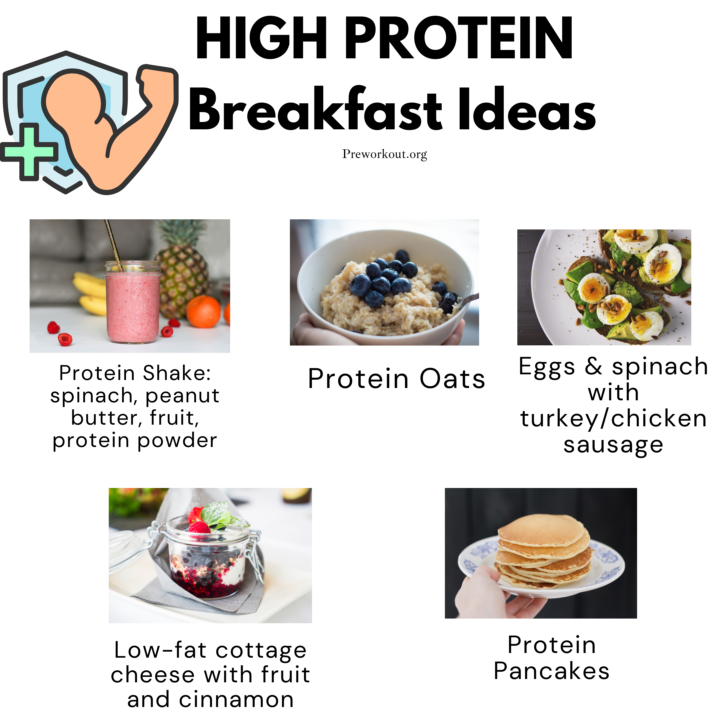
Breakfast for 1 Week:
Monday
2 eggs, 2 egg whites, 2 slices Ezekiel Bread, Onions and Tomatoes, 1 oz avocado
Tuesday
Multigrain bagel (10g protein) with 2 tablespoons low fat cream cheese (3g protein) and 3 oz smoked salmon (16g protein) = 29g protein
Wednesday
whole egg (6g protein) plus 4 egg whites (14 g protein) scrambled with 1/4 cup shredded part-skim mozzarella cheese (7g protein) spinach, tomatoes, and onions and slice of whole wheat toast (4g protein) = 31g protein
Thursday
6 oz container greek yogurt (18g protein), with 1 ¼ cup kashi go lean original cereal (12g protein) = 30g protein
Friday
½ cup oatmeal, ½ scoop protein, 1 egg, 2 egg whites (or 3 egg whites)
Saturday
1 packet of original instant oatmeal (4g protein) made with water, 1 scoop protein powder (20g protein), 2 Tablespoons chia seeds (6g protein) = 30g protein
Sunday
1 cup of cottage cheese (28 grams) with 5 chunks of pineapple with 1 tsp of chia seeds (1 gram) = 29 grams protein
Lunch for 1 Week:
Monday
3.5 oz of turkey breast (28 grams) rollups with an apple = 28 grams of protein
Tuesday
4 hard boiled eggs (24-28g depending on size), paired with 1 cup of baby carrots = 28 grams of protein
Wednesday
3.5 oz of chicken on top spinach, tomatoes, cucumbers, mushrooms with 2 tbsp of balsamic vinaigrette = 30g protein
Thursday
Large spinach salad with non-starchy vegetables (1g protein), 4 oz grilled chicken (28g protein) and ¼ cup garbanzo beans (4g protein) = 33g protein
Friday
High fiber wrap (4g protein) with 4 oz of sliced turkey (28 g protein), sliced tomato, lettuce, and mustard = 32g protein
Saturday
1 cup turkey chili (19g protein) with ¼ cup shredded part skim cheddar cheese (7g protein) and a whole wheat dinner roll (4g protein) = 30g protein
Sunday
Tuna melt made with ½ cup of tuna salad (18g protein), 2 slice of whole wheat bread (7g protein), 1 slice American cheese (5g protein) = 30g protein
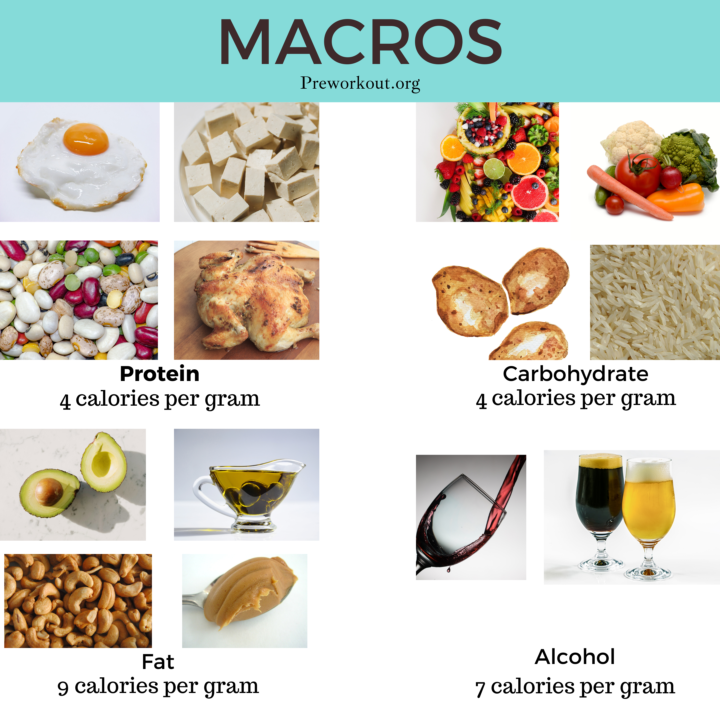
Dinner for 1 Week:
Monday
4 oz filet mignon (28g protein) with ⅓ cup quinoa (2-3g protein) = 31g protein
Tuesday
2 oz “Banza Chickpea Pasta” (14g protein) with tomato sauce, 2 oz turkey meatballs (14g protein) and 1 Tablespoon parmesan cheese (2g protein) = 30g protein
Wednesday
Ground Chicken Lettuce Wraps: 4 oz ground chicken (28g protein) with diced tomato, onion, and ¼ cup shredded part skim cheddar cheese (7g protein) served in iceberg lettuce wraps = 35g protein
Thursday
5 oz Turkey or lean beef meatballs (35g protein) over steamed spinach (1g protein) and sprinkled with 1 tablespoon parmesan cheese (2g protein) = 28g protein
Friday
Turkey burger or hamburger made with 4 oz lean ground turkey or lean ground beef (28g protein), 1 slice of low-fat cheese (7g protein), lettuce, tomato = 35g protein
Saturday
Steak salad with 4 oz lean grilled steak (28g protein), grilled peaches, cherry tomatoes and 1 oz light feta cheese (5g protein) over 3 cups spinach (3g protein) = 36g protein
Sunday
Turkey Quinoa Stuffed Pepper: 4 oz ground turkey (28g protein), ⅓ cup quinoa (2-3g protein) mixed with ¼ cup tomato sauce, shredded scallions, and 1 oz. light shredded cheese (5g protein) baked in bell pepper = 35g protein
Are There Supplements That Help With Fat Loss?
Whey Protein
As we discussed earlier, to preserve muscle mass during a fat loss phase, it is absolutely vital that you consume enough lean protein. Whey protein can be a helpful supplement to increase your total daily protein intake.
Here’s why we like Shifted’s whey protein isolate:
- 25g of complete protein
- 100% Whey Protein Isolate (flavored)
- ~12g Essential Amino Acids
- ~5.5g Branched Chain Amino Acids
Creatine
When creatine is mentioned, most people only think about muscle and strength building, but it has a place in fat loss as well.
Reasons to supplement creatine during weight loss:
- If you’re restricting calories, there’s the chance that your natural creatine levels (found in foods like red meat) could be low.
- Creatine helps increase muscle size, strength, and power
- Most important during a fat loss phase is that creatine provides enhanced recovery
Frequently Asked Questions
1) What is the fastest way to burn fat?
Consistently eating fewer calories than you burn and prioritizing strength training and sleep is the fastest way to burn fat.
2) What’s the best way to lose weight in your face?
Genetics determines where we lose fat. Consistently eating fewer calories than you burn and prioritizing strength training and sleep will deliver the best results.
3) What’s the fastest way to lose belly fat?
We can’t choose where fat is reduced on our body. Consistently eating fewer calories than you burn and prioritizing strength training and sleep will deliver the best results.
4) Can I lose 10 lbs in one month?
Yes, but experts say a safer, more sustainable rate is losing around half a pound to 2 pounds a week.
5) How do I lose fat in my thighs?
Genetics determines how fat is carried on the body. Consistently eating fewer calories than you burn and prioritizing strength training and sleep will deliver the best results.
6) How do I lose fat under my chin?
Genetics determines how fat is carried on the body. Consistently eating fewer calories than you burn and prioritizing strength training and sleep will deliver the best results.
7) How do I lose fat in my arms?
Genetics determines how fat is carried on the body. Consistently eating fewer calories than you burn and prioritizing strength training and sleep will deliver the best results.
8) Can I gain muscle while losing fat?
Yes, but only to an extent because to maximize muscle gain you want to eat in a calorie surplus and to lose fat you want to be in a calorie deficit. Gaining muscle while losing fat is most efficient for beginners and those with a higher body fat percentage.
9) Can you lose weight without exercising?
Yes, you can lose weight with diet alone but adding in exercise is better for overall health.
10) What is the best kind of workout for losing weight?
Working out isn’t enough to make weight loss happen. You still need to be in a calorie deficit. The best workout for you to support your weight loss journey is the one you most enjoy and will continue over time. If you’re looking for workout styles to help get started, try any of these: Strength training, interval training, boot camp classes (usually combining strength + running), swimming, or kickboxing. See our free workout examples in this article to help you get started!
About The Author:

Megan Sparacio is a certified personal trainer who writes on health and fitness. She has over five years experience writing well-researched pieces aimed at helping folks reach their fitness and lifestyle goals.
Megan is passionate about staying up-to-date with and communicating methods to help others make lasting changes in their physical fitness and behavior and mindset. In her spare time, she enjoys spending time with her family, running and lifting, and painting.
She currently lives in Tennessee and also works as an NASM Certified Personal Trainer.
References Cited
- Paluch AE, Bajpai S, Bassett DR, Carnethon MR, Ekelund U, Evenson KR, Galuska DA, Jefferis BJ, Kraus WE, Lee IM, Matthews CE, Omura JD, Patel AV, Pieper CF, Rees-Punia E, Dallmeier D, Klenk J, Whincup PH, Dooley EE, Pettee Gabriel K, Palta P, Pompeii LA, Chernofsky A, Larson MG, Vasan RS, Spartano N, Ballin M, Nordström P, Nordström A, Anderssen SA, Hansen BH, Cochrane JA, Dwyer T, Wang J, Ferrucci L, Liu F, Schrack J, Urbanek J, Saint-Maurice PF, Yamamoto N, Yoshitake Y, Newton RL Jr, Yang S, Shiroma EJ, Fulton JE; Steps for Health Collaborative. Daily steps and all-cause mortality: a meta-analysis of 15 international cohorts. Lancet Public Health. 2022 Mar;7(3):e219-e228. doi: 10.1016/S2468-2667(21)00302-9. PMID: 35247352; PMCID: PMC9289978.
- Rajita Sinha, Role of addiction and stress neurobiology on food intake and obesity, Biological Psychology, Volume 131, 2018, Pages 5-13, ISSN 0301-0511, https://doi.org/10.1016/j.biopsycho.2017.05.001. (https://www.sciencedirect.com/science/article/pii/S030105111730087X)
- McKiernan F, Houchins JA, Mattes RD. Relationships between human thirst, hunger, drinking, and feeding. Physiol Behav. 2008 Aug 6;94(5):700-8. doi: 10.1016/j.physbeh.2008.04.007. Epub 2008 Apr 13. PMID: 18499200; PMCID: PMC2467458.
- Papatriantafyllou E, Efthymiou D, Zoumbaneas E, Popescu CA, Vassilopoulou E. Sleep Deprivation: Effects on Weight Loss and Weight Loss Maintenance. Nutrients. 2022 Apr 8;14(8):1549. doi: 10.3390/nu14081549. PMID: 35458110; PMCID: PMC9031614.
- Stallknecht B, Dela F, Helge JW. Are blood flow and lipolysis in subcutaneous adipose tissue influenced by contractions in adjacent muscles in humans? Am J Physiol Endocrinol Metab. 2007 Feb;292(2):E394-9. doi: 10.1152/ajpendo.00215.2006. Epub 2006 Sep 19. PMID: 16985258.
- Schoenfeld BJ, Aragon AA. How much protein can the body use in a single meal for muscle-building? Implications for daily protein distribution. J Int Soc Sports Nutr. 2018 Feb 27;15:10. doi: 10.1186/s12970-018-0215-1. PMID: 29497353; PMCID: PMC5828430.
- Papatriantafyllou E, Efthymiou D, Zoumbaneas E, Popescu CA, Vassilopoulou E. Sleep Deprivation: Effects on Weight Loss and Weight Loss Maintenance. Nutrients. 2022 Apr 8;14(8):1549. doi: 10.3390/nu14081549. PMID: 35458110; PMCID: PMC9031614.
